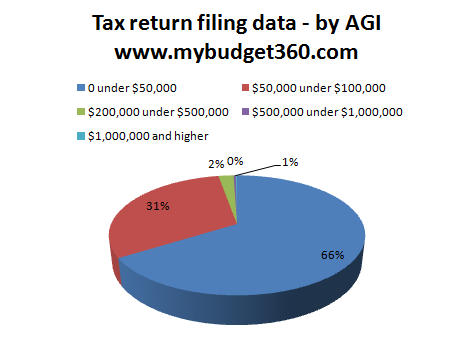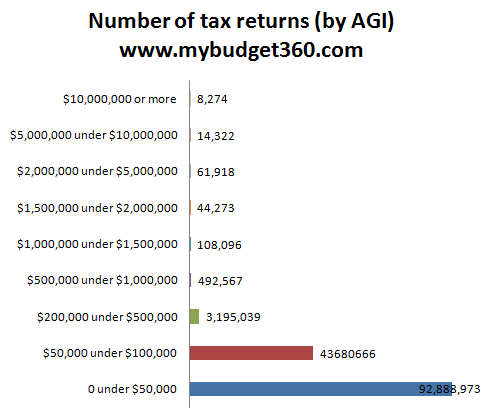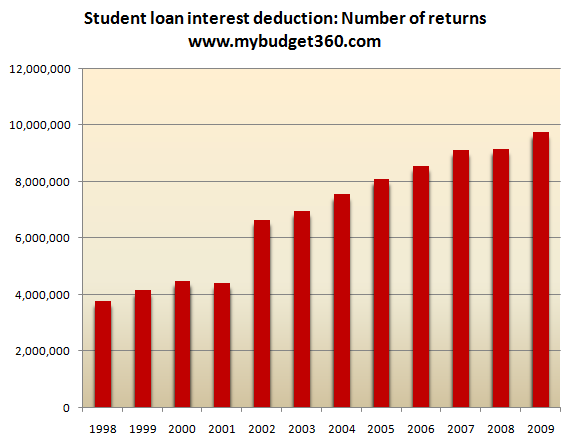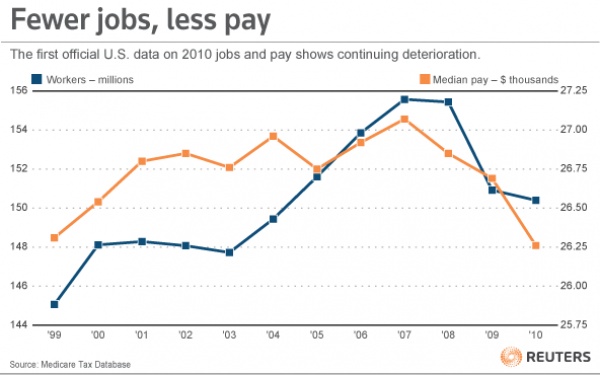Gee, I'm sure this well-researched article will put an end to the false belief that the FMs caused the financial crisis, which has become an article of faith among many, especially on the Right.
I'm doubly sure that those who refute this article will come back with statistics or studies or something checkable to support their false claim that the FMs/GSEs caused the financial crisis.
Yep, I'm absolutely sure, because we're all reasonable, fact-based thinkers.
By Jeff Madrick and Frank Partnoy
October 27, 2011 | New York Review of Books
Amid the current financial turmoil, the causes of the crisis that just preceded it—the bursting of the housing bubble—are being badly distorted. Some analysts, including the authors of the book under review [Reckless Endangerment: How Outsized Ambition, Greed, and Corruption Led to Economic Armageddon, by Gretchen Morgenson and Joshua Rosner], are arguing that the housing and financial crises of 2007 and 2008 were the direct result of federal guarantees of mortgages, a program first created in the 1930s, and therefore less so the result of the aggressive creation of mortgages by private business than has been widely reported.
In particular, the authors accuse two quasi-public but profit-making companies, Fannie Mae (the Federal National Mortgage Association) and Freddie Mac (the Federal Home Loan Mortgage Corporation), of adding risks to the mortgage markets that resulted in disaster. Much the same criticism has been made by Peter Wallison, a fellow of the American Enterprise Institute, who wrote an angry dissent to the findings of the Financial Crisis Inquiry Commission (FCIC), which was appointed by Congress to investigate the causes of the crash. Contrary to Wallison, the nine other members of the commission, including three others appointed by Republicans, concluded that Fannie and Freddie were not the main causes of the crisis.
Along with many other experts, the nine members pointed to considerable evidence that, despite large losses, these government-sponsored enterprises (GSEs), as they are known, bought or guaranteed too few highly risky loans, and did so too late in the 2000s, to cause the crisis. But in their new book, Reckless Endangerment, the New York Times reporter Gretchen Morgenson and mortgage securities analyst Joshua Rosner try to revive the issue of their responsibility.
The book boldly and passionately asserts that the risk-taking of Fannie Mae and Freddie Mac was a major element in causing the housing bubble. In particular, the authors blame the crisis on the goals set by the Clinton administration in the early 1990s to make lending "affordable" to more middle- and low-income home buyers. These goals were raised several times over the next dozen years so as to include more people, with the result that loans became cheaper. The authors write, "The homeownership drive helped to plunge the nation into the worst economic crisis since the Great Depression." They add, "How Clinton's calamitous Homeownership Strategy was born, nurtured, and finally came to blow up the American economy is a story of greed and good intentions, corporate corruption and government support."
This bold claim, however, is not substantiated by persuasive analysis or by any hard evidence in the book. The GSEs did generate large losses, but their bad investments in housing loans followed rather than led the crisis; most of those investments involved purchases or guarantees made well after the subprime and housing bubbles had been expanded by private loans and were almost about to burst.
Even then, the GSEs' overall purchases and guarantees were much less risky than Wall Street's: their default rates were one fourth to one fifth those of Wall Street and other private financial firms, a fact not made clear by the authors. A further review of other literature shows that Clinton's goals to increase "affordable lending" had little to do with the risks the GSEs took. The FCIC, for example, argued that in several years these goals were largely met by the GSEs' standard loans with traditional down payments.
Although they were set up originally by the federal government, the GSEs have been private companies for roughly the last forty years. They are traded on the stock market and were on a hunt for profits like much of Wall Street, in part because their executives' bonuses were linked to earnings per share. Even so, by comparison with other companies they restrained their risk. Private firms on Wall Street and mortgage companies across the nation, uncontrolled by adequate federal regulation, unambiguously caused the crisis as they expanded in the 2000s. They were the ones who "came to blow up the American economy."
This is not to say that the GSEs' way of doing business was sensible or that their losses—up to $230 billion—can be justified. The hybrid business model of a quasi-public but profit-making company, whose bonds were treated in the financial markets as if they were guaranteed by the federal government, was likely to lead to abuse and careless investment. Financial markets assumed that the GSEs were relatively safe partly because they were regulated by a federal agency, the Office of the Federal Housing Enterprise Oversight (OFHEO) and were subject to a web of rules. They also had a long record of backing safe mortgages. The authors describe well how, beginning in the 1990s, Fannie in particular betrayed its responsibilities. It aggressively minimized federal regulation of its activities and it fought off attempts to tax its profits, partly through extravagant favors to influential lawmakers. This is a story that needed telling. Reform of the GSEs should be an urgent part of a new federal housing agenda.
But the book's unjustified thesis that Fannie and Freddie were major causes of the financial crisis is being used by politicians and pundits to soften criticism of private business and by lobbyists and others who would water down the new regulations passed by Congress under the Dodd-Frank Act. The book is also being exploited by those who believe the federal government should have little if anything to do with support for the mortgage market, a view we find unfounded.
Reviving the housing market was a high priority for Franklin Delano Roosevelt when he took office in 1933. In 1934, he created the Federal Housing Administration, which guaranteed mortgage payments, and provided insurance for savers' deposits in the thrift institutions that then were the nation's leading mortgage writers. He had also created a government bank, the Home Owners' Loan Corporation, to make new loans to distressed home owners and buy bad mortgages from failing financial institutions. Finally, in 1938, he established Fannie Mae to guarantee mortgages that met adequate standards or buy them outright from private financial institutions; it issued its own debt to major investors to support its practices. The goal was to maintain a stable mortgage market with reasonable borrowing rates in all regions of the country.
For roughly fifty years, Fannie Mae did its job. Home ownership rates rose from about 40 percent in the 1920s to about 60 percent and, in contrast to earlier, far more volatile history, the mortgage market was mostly stable. Freddie Mac was created in 1970 as a private company to package mortgages into securities that could be sold to institutional investors like pension funds.
That the GSEs were private began to draw increasing criticism as they grew larger. The implied federal guarantee of the debt of these private, profit-making companies, which lowered their borrowing rates, made it easier for them to grow and make new and riskier loans. Some urged that the GSEs be fully privatized and stripped of any advantage they might have because of federal regulation. Wall Street and mortgage firms wanted for themselves the business Fannie and Freddie were doing, including the packaging of mortgages into securities.
In the early 1990s, Congress recognized that Fannie and Freddie, which were growing rapidly, required closer regulation. President Clinton and Congress also were eager to channel more loans to lower-income Americans. Congress passed the Federal Housing Enterprises Financial Safety and Soundness Act of 1992, which established a new agency to oversee the GSEs and set affordable lending goals.
From the beginning, the new oversight agency—OFHEO—was weak. And this is essentially where Reckless Endangerment begins, with sordid details about how James Johnson, Fannie's chief executive and an influential Democratic insider, fended off control by OFHEO during its first seven years. Johnson established an expensive twelve-person lobbying office, gave campaign money to powerful politicians, and made contributions to the favorite charities of influential congressmen. He opened local development offices in congressional districts as a public relations campaign to show how congressmen were helping their local constituents get mortgages.
By means of such measures, Johnson won congressional support and repeatedly resisted attempts by a handful in Congress to rein Fannie in, as did his successor in 1999, Franklin Raines, President Clinton's former budget director. Perhaps most important, Johnson tied his own CEO bonuses and those of other executives to the earnings of the company.
Morgenson and Rosner make a strong if one-sided case against Johnson. We never hear from any of his defenders, and he refused, the authors write, to be interviewed. But as they make clear, Johnson, partly by his egregious self-promotion, made Fannie virtually untouchable politically. Above all, he exploited the Fannie mandate to lend to lower-income Americans in order to expand the company's reach, and in the process increase both its earnings and his personal wealth.
They also note that Democrats ranging from Congressman Barney Frank, who got his partner a job with Fannie, to former Clinton adviser Lanny Davis were strong supporters of Fannie Mae. William Daley, a high-level adviser to President Obama, was on Fannie's board. They cite Republicans who were Fannie supporters or executives as well, including Newt Gingrich, Senator Christopher Bond, and Robert Zoellick, legal counsel of Fannie and currently head of the World Bank.
The authors make no serious charges of outright fraudulent corruption on the part of these people, however. The one potential exception is Angelo Mozilo, the flamboyant head of Countrywide Financial, the nation's largest mortgage originator, who offered beneficial mortgage rates to some influential politicians. But the authors add nothing new here. The "friends of Mozilo," who got cut-rate VIP loans, included Johnson, Senators Chris Dodd and Kent Conrad, and the late Ambassador Richard Holbrooke, among others. But while Mozilo did favors for them, Morgenson and Rosner cite no specific favors returned to Mozilo by Dodd, Conrad, Holbrooke, or the others mentioned.
In these and other cases, the authors tar with a broad brush. They write that they conducted interviews over more than a decade and amassed a "mountain of notes," but many sources quoted are anonymous and the book does not cite references in footnotes so there is no way to assess many of their assertions. They almost never deal with counterarguments to their many claims, if only to show them wrong.
They make some odd errors as well, such as stating that Walter Mondale was "sitting out" the 1980 presidential election, when as vice president he ran again as Jimmy Carter's running mate. Their scathing criticism of a Federal Reserve Bank of Boston study published in 1992, which demonstrated prejudice against minorities in the distribution of mortgages in the Boston area, is an especially disturbing example of their one-sided reporting. They assert that this study, which they say influenced Congress's adoption of affordable lending goals, was deeply flawed. They mock the primary author of the study, the economist Alicia Munnell, and state that the Boston Fed made "a fool of itself."
But they don't point out that the Boston Fed's study was later subject to a stringent peer-review process and was published in 1996 in the respected American Economic Review. Indeed, few research papers have been as closely scrutinized. The published results, which corrected some methodological errors, showed persuasively that there was in fact a bias in the mortgage markets. In 1998, another peer-reviewed paper—also ignored by the authors—analyzed the criticisms of the Boston Fed study, as well as other research on mortgage bias, and concluded that the study was fundamentally correct. "The bottom line is that the results related to race are extremely robust," wrote the author.
The one claim that Morgenson and Rosner depend upon most for their extreme conclusions about Fannie and Freddie is especially poorly documented. Fannie, they write, started influencing the private sector in damaging ways beginning in the 1990s, when the GSEs reduced the down payments required for mortgages in order to help poorer Americans acquire housing loans. Fannie's lower standards "set the tone for private-sector lenders across the nation." In support, they cite two quotes from one unidentified former Fannie executive. They offer no empirical evidence, or even telling illustrations or anecdotes. A more recent paper by economist Edward Pinto offers more supposedly illustrative anecdotes about reduced down payments but remains unpersuasive. In fact, the loans guaranteed by Fannie in those years were always privately insured.
But the key point—which is largely missing from Reckless Endangerment —is that private lenders made far riskier loans than GSEs bought or guaranteed, especially during the 1990s, when subprimes issued to borrowers with low income and poor credit were relatively new. You will not read in Reckless Endangerment that the GSEs bought very few subprimes in these years. Rather than leading the way, Fannie's market share of the low-income home buyers fell behind private industry's far riskier lending to poorer home owners and others.
The increased risk-taking of the GSEs during the 1990s, far more modest than what was to come in the 2000s in the private sector, had no bearing on the financial crisis of 2007 and 2008. The authors make it seem as if it did, however. They write:
Clinton's public-private partnership was ramping up…. To meet the goals Fannie and Freddie had to buy riskier mortgages, such as those defined as subprime….
Some $160 billion in subprime mortgages would be underwritten in 1999, up from $40 billion five years earlier. And in another four years, that figure would jump to $332 billion.
Many of those loans wound up in Fannie's and Freddie's portfolios. By 2008, some $1.6 trillion of toxic mortgages, or almost half of those that were written, were purchased or guaranteed by Fannie and Freddie.
As noted, the GSEs bought very few subprimes in the 1990s. But it might especially surprise the inexpert reader to know that the GSEs did not own almost half of the "toxic mortgages" written by private companies, a remarkable exaggeration on the part of the authors. As usual, no source for the estimate is given, but it is likely based on the analysis of Pinto, who was a former Fannie official and is a colleague of Wallison's at the American Enterprise Institute. To make the claim, Pinto radically redefined what qualified a mortgage to be subprime or an Alt-A, for which mortgage-holders were often not required to document their income, rejecting the conventional and widely accepted definitions. In his analysis, almost any mortgage held by Fannie and Freddie with modest above-average risk was categorized, to use Morgenson and Rosner's term, as "toxic."
If so, one would presume the delinquency rates suffered by the GSEs during the crisis would have been very high. But David Min, an analyst with the Center for American Progress, shows that the after-crisis delinquency rates on the large additional portion of GSE mortgages that Pinto claimed were high risk, and that was termed "toxic" by Morgenson and Rosner, was roughly 10 percent, far lower than the 25 to 30 percent default rate of true subprimes. In fact, the rate of delinquencies for all GSE securities in 2004 was 4.3 percent, compared to a delinquency rate in private industry of 15.1 percent of mortgages. In 2005, the GSE rate was 7.8 percent compared to 28.7 percent, and in 2006 and 2007, the rates reached 13.2 and 14.9 percent in the GSEs and 45.1 and 42.3 percent in the private market. None of these figures are cited in Reckless Endangerment. In fact, losses as a proportion of mortgages guaranteed or bought by the GSEs were far lower than in private industry.
When Wall Street was taking more and more risk in the 2000s, as the housing bubble expanded, the GSEs were, relatively speaking, sitting it out. Johnson had left Fannie at the end of 1998 with a $21 million pay package, joining the board of Goldman Sachs and eventually running the Brookings Institution and becoming a key adviser to Senator John Kerry in his run for the presidency. But serious accounting irregularities under Raines, perhaps initiated under Johnson, left Fannie subject to immense pressure years later to get its books straightened out. Overall mortgage debt grew by 11.9 percent a year from 2003 to 2007, but the amount funded by the GSEs grew by only 7.6 percent a year. The GSE market share fell from over 50 percent to 40 percent.6
The GSEs did buy subprime mortgages in the 2000s, but contrary to the impression given by Morgenson and Rosner, their purchases were always a distinct minority of those sold by Wall Street. As Jason Thomas and Robert Van Order of George Washington University further point out, the subprimes the GSEs bought in these years were from the safer triple-A tranches of basic mortgage-backed securities, i.e., the highest quality of groups of mortgages rated by their risk of default. The GSEs never bought the far riskier collateralized debt obligations (CDOs) that were also rated triple-A and were the main source of the financial crisis. (The triple-A classifications of some of those CDOs were conferred on them very dubiously by the credit-rating agencies, Standard & Poor's and Moody's.) It turned out that subprimes accounted for only 5 percent of the GSEs' ultimate losses, according to Thomas and Van Order.
Some, like Alan Greenspan, argued that the GSEs' purchases of subprimes, nevertheless, helped hold down mortgage rates and therefore pushed up demand for housing and housing prices. But Thomas and Van Order strongly dispute that as well, showing that there was so much demand for the healthier triple-A tranches the GSEs bought that the purchases of subprimes made virtually no difference.
What then caused the losses of up to $230 billion by the GSEs that required the Treasury to put them into conservatorship in September 2008—they are now run by the Federal Housing Finance Agency—and a federal bailout of up to $150 billion in capital? It had little to do with pursuit of the original goals of "affordable lending." The GSEs were far more concerned to maximize their profits than to meet these goals; they were borrowing at low rates to buy high-paying mortgage securities once their accounting irregularities were behind them. For example, they started aggressively buying Alt-A loans that did not generally meet affordable lending goals because they were made to higher-income individuals. This was irresponsible. Most disturbing about the GSEs, they refused to maintain adequate capital as a cushion against losses, despite demands from their own regulators that they do so.
The GSEs never took nearly the risks that the private market took. Still, when housing prices collapsed so sharply, even modestly risky and traditionally safe mortgages produced losses. The risky lending was not driven by the affordable lending goals; nor did it cause the crisis. Thomas and Van Order write convincingly that the downfall of the GSEs "was quick, primarily due to mortgages originated in 2006 and 2007. It…was mostly associated with purchases of risky-but-not-subprime mortgages and insufficient capital to cover the decline in property values."
After devoting roughly two thirds of their book to Johnson and the GSEs, Morgenson and Rosner comment, "Of all the partners in the homeownership push, no industry contributed more to the corruption of the lending process than Wall Street." The assertion is jarring, coming so late in the book and after so much blame has been leveled at the GSEs. The authors do not really try to prove their point. They do not seriously address the derivatives market—the highly leveraged securities based on other securities that were at the core of excessive risk-taking. They mostly present a random collection of examples of wrongdoing, and their points have largely been made elsewhere.
But they add some useful details. Earlier in the book, they tell very well the story of NovaStar Financial, a mortgage originator that began doing business in the 1990s and exploited home owners still more in the 2000s. The company's history can serve as a quintessential example of regulatory failure. Respected Wall Street firms fed NovaStar and other dubious mortgage-writing companies with more money than they could wisely use. The authors also show how Goldman Sachs supplied mortgage money to Fremont, which they call "one of the nation's most wanton mortgage originators." Goldman, however, was only one of the pack, and many Wall Street investment banks owned their own aggressive mortgage originators.
The authors, moreover, explain clearly how the prices of collateralized debt obligations were driven up by credit-rating agencies. They show how some banks used off-balance-sheet accounting that permitted them to stuff risky assets into hidden "Special Purpose Vehicles," or SPVs. But here they mix up SPVs with more complex "Structured Investment Vehicles," or SIVs, which resemble CDOs but have shorter-term debt. Both the book and its index mislabel SIVs as "Special Investment Vehicles." They incorrectly write that Citigroup's large losses were due to problems in their SIVs. The big bank's losses actually came from the highly rated parts of CDOs they retained as well tens of billions of dollars of guarantees they made to those who bought the CDOs they underwrote, known as liquidity puts.
Clearly, the GSEs must be reformed and, if they are allowed to have the advantage of a presumed government guarantee, their practices and profits must be controlled and limited. A federal presence in the mortgage market is required to maintain liquidity and adequate access for home buyers. As for poorer families, a system of mortgages based on affordable lending goals is not necessarily the most efficient way to enable them to purchase homes. Direct vouchers might be a better alternative. Finally, there is the larger and more controversial question of whether many people, and the financial system itself, might be better off if more homes were rented, not bought.
But these are different debates than the one this book has provoked. Contrary to many commentators on Reckless Endangerment, and to its chief claims, it was Wall Street, not the GSEs, that fundamentally caused the 2007–2008 crisis, which was driven not merely by a headlong pursuit of easy profit but also by ethically dubious practices. Morgenson and Rosner discuss a handful of these practices and raise appropriate questions about why Wall Street participants were not criminally prosecuted. We will turn our attention to this important issue in a second article.
—This is the first of two articles.






